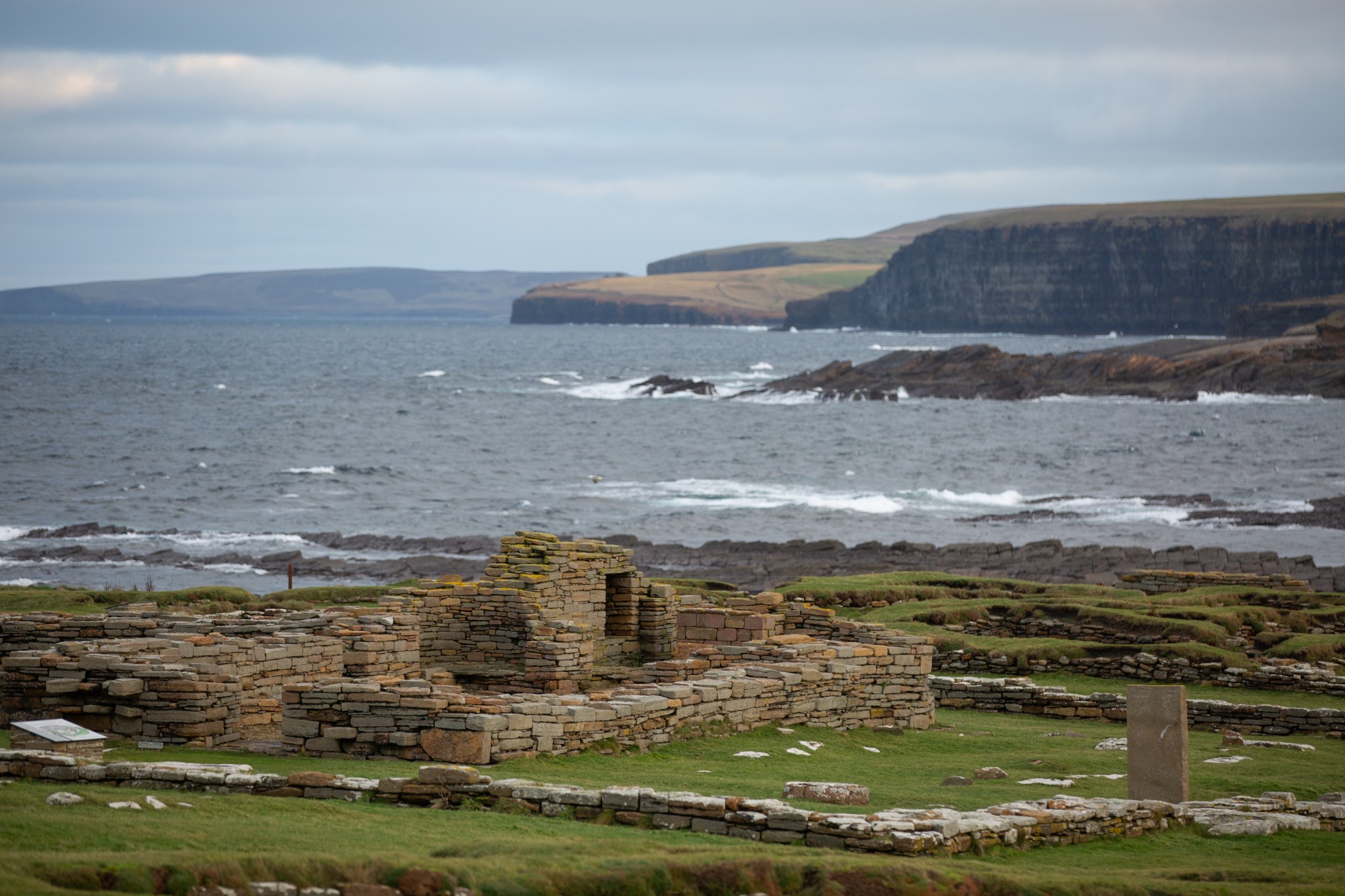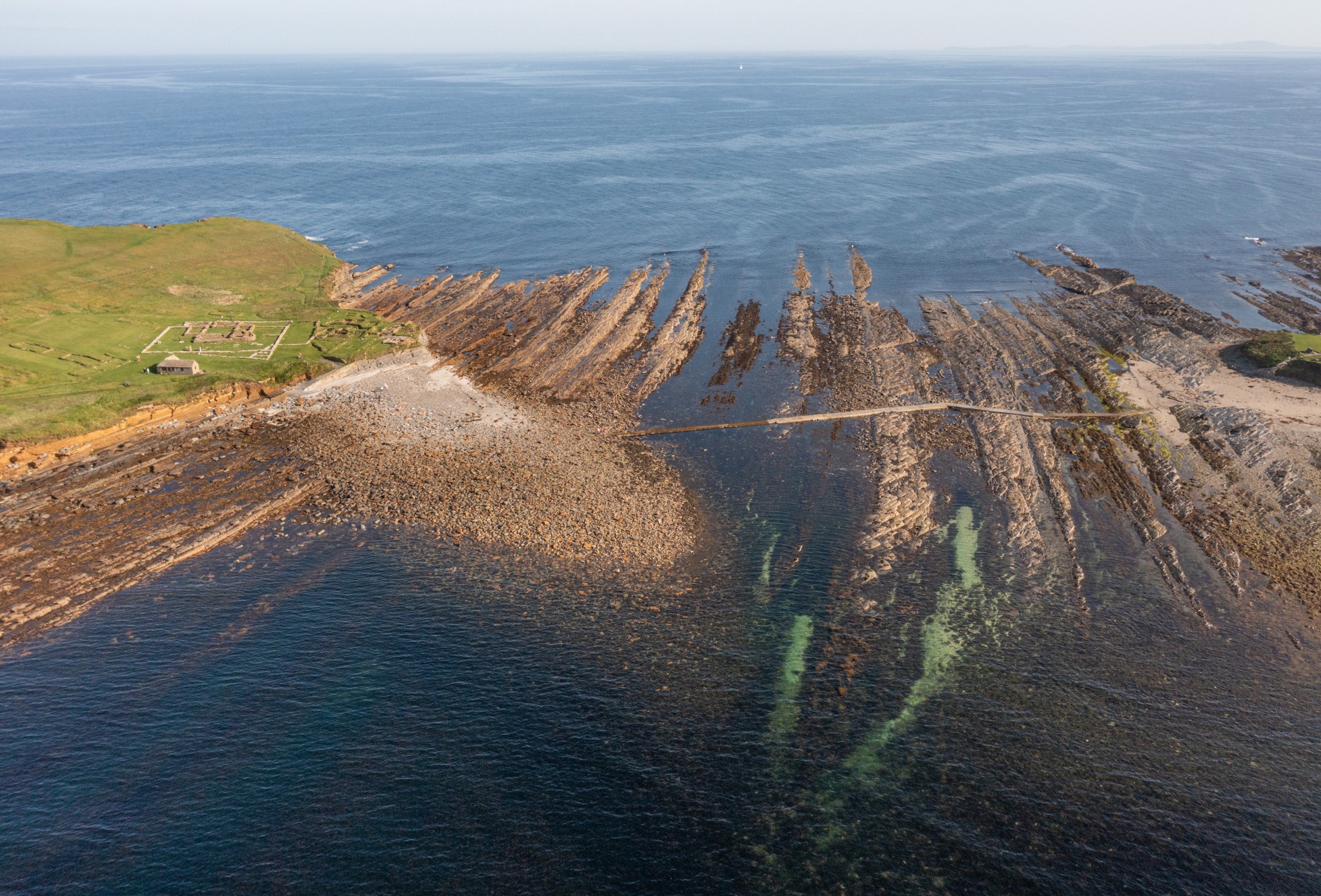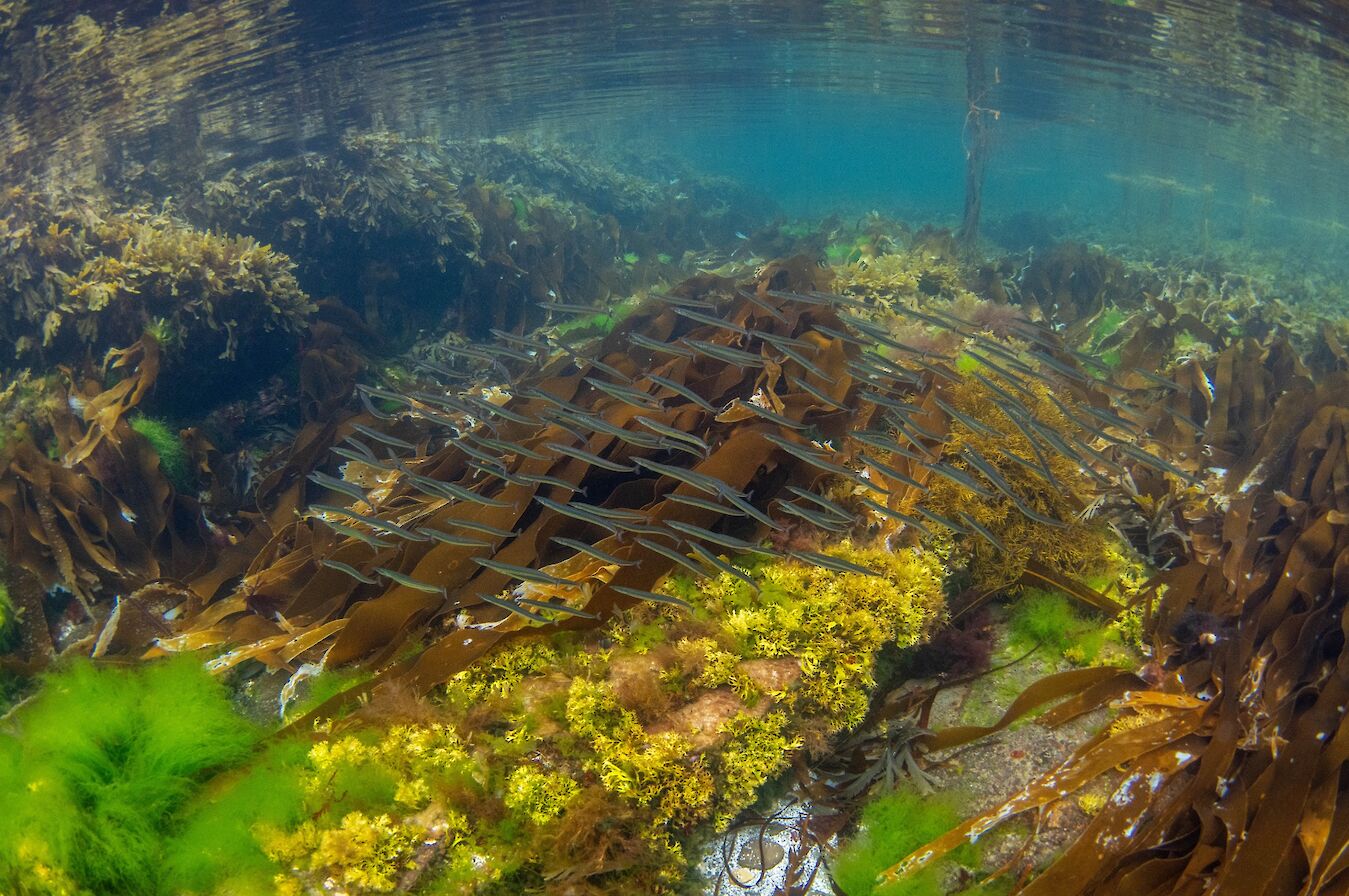The Brough of Birsay is a small island lying just off the north west corner of Orkney’s mainland. It attracts a steady troop of visitors when the sea allows, as this is a tidal island.
Most are lured by the promise of seeing puffins but these diminutive auks all but left for the open ocean some months ago. It is however a lovely walk in its itself, there is plenty of time between tides to circumnavigate the island which rises up to 45 metres high where the lighthouse stands. I did once nearly get caught out. I had become engrossed in photographing fulmars and as I walked back down the hill towards the shore, I realised the tide was fast coming in.
The prospect of spending another tide cycle on the island with just one kit-kat for sustenance wasn’t very appealing and so I strode across the concrete causeway adjoining the island with the shore at the Point of Buckquoy, the water lapping above my boots. I would recommend paying more attention to the tide as when it gets going the current really rips through.
Picts once settled here but most of the structures left standing are the remains of a Viking settlement. As a boy I was less interested in the archaeology and more interested in the eider duck that almost always raised a brood of ducklings in the long vegetation found in the middle of the island.
These days however what I find most exciting lies between the Brough and the Birsay shoreline. Walking along the causeway you can see shallow pools on either side; indeed, this is a famous site where the geology lends itself to some fantastic rock pooling opportunities. But today I’m going to go one better than search the cut off pools and the inhabitants left behind by the receding water. I’ve long wanted to get under the surface here and see what lies beneath in the deeper channels.
A funny sensation happens every time I dive using a wetsuit, the water seeping into your boots gives an indication of how cold the dive will be and I think either sets you off on the right foot or wrong depending on how cold it is. This summer has seen unusually warm sea temperatures - we are experiencing ‘marine heatwaves’ in Scotland and I’ve experienced this myself in Orkney having been snorkelling quite regularly in our seagrass meadows. This summer was the first time I’ve ever gotten out of the water because I was too warm. However, in dipping my feet over the edge of the causeway, I can feel quite a chill, the cooler water of the Atlantic rushing through the neoprene.
As I sort out my camera gear and pull on my fins, I’ve attracted quite a crowd. Most look a little confused as to why I would want to get in the water here and I manage to crack a smile before I put my head under. I hear a thick American accent saying ‘I wonder what he’s diving for?’ before a wisecrack replies ‘maybe he’s diving for pearls!’
There is no such treasure of that kind on offer but on submerging below the surface, what I see before me is more than enough. The water is cool and crystal clear. I can see for ten metres or more and it feels really liberating, relaxing even. This summer I’ve mostly been diving with a macro lens on, focusing on tiny fish and anemones in murky conditions. That kind of photography can be intense but today I have a very wide lens on.
I like to think of a scene like this as an underwater landscape rather than a seascape, expect that you’re floating through it. I’ve entered the pool just where the water is rushing from east to west through the causeway and can see that the pebbles in front of it are scoured clean. For fun I let the current take me and it feels fantastic to fly over the first seaweed I encounter, sugar kelp. It can grow to around 1.5m in length and I can see that the fronds with its dimpled surface is already starting to look past its best as it undulates with the strength of the rushing water.
I fin as hard as I can in the channel just to remain in the same place but it’s a losing battle. All it takes though to break the hold is to simply swim to the side a little and the current loses almost all its power. It’s too much fun though so I let the current take me and I’m now drifting through a vibrant scene. Normally I dislike the long slimy nature of the cylindrical frond of mermaid’s tresses, otherwise known as bootlace weed. It likes sheltered areas and can be a bit of pest when you’re diving if it’s in profusion, getting caught on your tank and other equipment. Today I’m snorkelling and it’s not a problem.
In fact, today it looks beautiful, hanging in great boughs, and those fronds floating on the surface look the colour of intense amber as the sun shines through it. Along the sea floor lies great swathes of gut weed, a rich, intense green not unlike the colour of Kermit!
As I drift down the channel there is a wall of sorts and one of the more familiar kelp species comes into sight. Oarweed can be found in great forests all around Orkney but here they simply line the wall. The stipe is smooth and the large blade which ends in long fingers is a deep honey colour, smooth to the touch but tough like leather too.
As the channel in front of me widens a little I can see that there is a nice patch of white coarse sand and, in much the same way that snow softens and lightens everything when the sun shines on it, so too does this sand. The water is so calm that the seaweeds are reflected onto the surface above creating a kaleidoscope of colour and textures. The brightness of the sand is reflected too and so this part of the water looks a bright turquoise.
It complements the corn yellow colour of the thong weed I can see growing here. The fronds are strap-like and uneven in nature. If this was a spring tide this would be the lower shore and isn’t where you would generally expect to find it. Just as I marvel at a piece of red seaweed (though magenta in colour) floating past, again complementing the turquoise behind it, I get a bit of a fright. A small shoal of sand eels rushes out of the sand in front of me. I feel bad for having disturbed them and as I turn around, they shadow me at a distance, as if to chastise me.
This feels like a good place to stop and turn back. What lies in front of me is a massive kelp bed, marked by the degrading frond of the dabberlocks seaweed. Its midrib is tough but the crepe-like shallow frond on either side is starting to come away. As I approach the shore again, I’m in a ‘field’ of serrated wrack. Easily identifiable by its serrated edges, it can dominate large areas of the lower shore.
I berate myself a little for not taking more time to try and study the zones that each seaweed inhabits but truth be told there looked to be much overlap. I can always try again though and sometimes it’s simply enough to admire the beauty in front of you without thinking too hard.
I’ll be returning here in winter to photograph an altogether wilder scene as massive rolling waves crash in under the steam of low-pressure systems. I can’t wait.
Find out more about Raymond’s work via his official website. You can also find him on Facebook, Twitter and Instagram.







